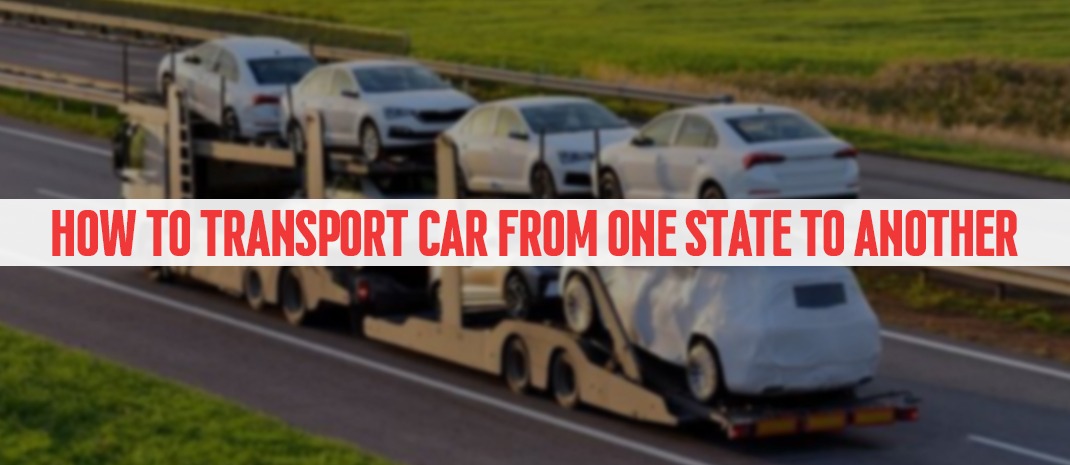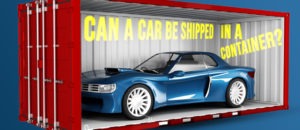Road Trip for Your Ride
So, you’re moving to a new state – congrats! New city, new job, maybe even new friends (adulting is weird, right?). But amidst the packing frenzy, there’s one crucial question looming: what about your car? Don’t worry, buddy, we’ve all been there. Dragging your trusty steed across state lines can feel like a logistical nightmare, but fear not! This guide will be your roadmap to a smooth car-shipping operation.
How to Get Your Car Transported?
Alright, let’s get down to brass tacks. There are a few ways to get your car to its new home, each with its own pros and cons. We’ll break them down like a choose-your-own-adventure story, so buckle up!
Option 1: Self-Driving
Pros:
- Budget-friendly: This is the cheapest option, especially if you’re planning a road trip anyway.
- Sightseeing on the go: Turn the drive into an adventure! Explore new places and maybe even snag some cheesy roadside attraction photos (we won’t judge).
- Total control: You can set the pace and blast your favorite tunes the whole way.
Cons:
- Time commitment: This could be a multi-day trek, depending on the distance. Factor in gas, food, and potential hotel stays.
- Wear and tear: Putting extra miles on your car isn’t ideal.
- Solo act (or maybe not so solo): Unless you have a road trip buddy (or two), this can get lonely after a while.
Option 2: Trailer or Tow Dolly
Pros:
- DIY spirit: You get the satisfaction of doing it yourself (think adult Legos for cars!).
- Double duty: Use your moving truck to tow your car, saving on shipping costs.
- More bang for your buck: If you have another vehicle and the know-how, this can be a cost-effective option.
Cons:
- Towing ain’t easy: This requires towing experience and a vehicle capable of handling the weight.
- Safety first: Improper towing can be dangerous. Make sure you have the right equipment and knowledge before attempting this.
- Not for everyone: This option isn’t ideal for long distances or if you’re uncomfortable towing.
Option 3: Auto Transport Company
Pros:
- The ultimate chill: Sit back, relax, and let the professionals handle it.
- Nationwide coverage: No matter where you’re moving, these companies can get your car there.
- Different options: Choose from open-air or enclosed trailers depending on your car’s value and weather conditions.
- Door-to-door service: They pick up your car at your old place and drop it off at your new one. Easy peasy.
Cons:
- Cost factor: This is the most expensive option.
- Less control: You’re trusting your car to someone else (although reputable companies take great care of vehicles).
Picking Your Perfect Ride for the Big Move: Open Air vs. Enclosed Trailers
classic car shippingWe mentioned choosing your champion car transport company, but another important decision is how your car will travel. Here’s where open auto transport service and enclosed vehicle transportation come in.
Open Air Transport:
This is the most common and budget-friendly option. Your car gets loaded onto a multi-level trailer alongside other vehicles. It’s a great choice for everyday cars and those comfortable with some exposure to the elements.
Pros:
- Cost-effective: The most affordable way to ship your car across state lines.
- Quick availability: Open transport is generally more readily available.
Cons:
- Weather exposure: Your car is exposed to sun, rain, and road debris.
- Security considerations: Less protection from potential theft or vandalism.
Enclosed Vehicle Transportation
For an extra layer of security and protection, enclosed car transportation trailers offer a fully enclosed environment for your car. This is ideal for classic car shipping, luxury vehicles, or if you’re worried about harsh weather conditions during transport.
Pros:
- Maximum protection: Your car is shielded from the elements, road hazards, and potential prying eyes.
- Peace of mind: Perfect for high-value vehicles or those in pristine condition.
Cons:
- Higher cost: Enclosed transport typically comes at a premium compared to open-air options.
- Limited availability: Enclosed trailers might have less availability, so booking in advance is recommended.
Consider your car’s value, the distance it travels, and weather conditions when choosing. Need to Ship a Car Across the Country for your new job on the opposite coast? An enclosed trailer might be the way to go for added peace of mind. Cruising in a reliable but not-so-fancy sedan? Open transport could be a perfect fit.
Bonus! If you’re a car enthusiast with a classic beauty or a collector’s item, be sure to inquire about specialized classic car shipping services. These companies offer top-notch care and secure transport for your prized possession.
For those who dream of a truly unique journey, boat transport service might be an option (although this is typically for international shipping). But hey, if you’re feeling adventurous and your car happens to be amphibious (or you have a really big yacht), then by all means, explore those options, too!
Tips for Finding the Right Auto Transport Company
So, you’ve decided to go the professional route. Here are some pointers to find a champion that won’t leave you stranded.
- Get quotes: Don’t settle for the first company you find. Compare quotes from several reputable auto transporters to get the best price and service.
- Read the fine print: Understand the fees involved, insurance coverage, and the estimated delivery timeframe.
- Ask questions: Don’t hesitate to ask about their experience, licensing, and customer service policies.
- Check online reviews: See what other people have experienced with the company.
Prepping Your Car for the Journey (Even if You’re Not Driving)
Even if you’re not the one behind the wheel, there are a few things you should do to get your car ready for its big move:
- Give it a TLC bath: A clean car is happy (and easier to inspect for any pre-existing damage). Wash away any dirt, grime, or road salt that might accumulate during transport. This also allows the transport company to assess the car’s condition properly.
- Top off the fluids: Ensure your car has enough oil, coolant, and windshield washer fluid for the trip. While the car won’t be driven during transport, a little top-up ensures everything is in good working order and helps prevent any potential issues. Check your owner’s manual for recommended fluid types and levels.
- Empty it out: Don’t leave any personal belongings in the car during transport. This includes things like phone chargers, sunglasses, or even loose change. Anything unsecured could bounce around and cause damage to your car’s interior or itself. Remember, the transport company is not responsible for lost or damaged personal items.
- Document any existing damage: Take pictures of any dents, scratches, dings, or other imperfections on your car’s exterior. This includes damage to the wheels, windows, and bumpers. Having a documented record protects you in case of any new damage occurring during transport. Walk around the car with the transport company representative during pick-up and note any existing damage on the Bill of Lading.
Bonus Tip: For an extra layer of security, consider removing any detachable accessories like antennas or roof racks. This minimizes the risk of them getting damaged during transport.
Hitting the Gas: The Shipping Process Explained
Now that you’ve chosen your champion and prepped your car, here’s a breakdown of what to expect during the shipping process:
- Booking your transport: Once you’ve selected a company and secured a quote, you’ll finalize the booking details, including pick-up and delivery locations, dates, and car details.
- The big pick-up: On the designated day, the transport company will arrive to pick up your car. Do a final walk-around inspection with the driver and note any existing damage on the Bill of Lading (a document outlining the car’s condition).
- Hitting the road (not you): Your car gets loaded onto the transport vehicle, be it an open-air trailer or an enclosed container.
- Tracking your chariot: Most reputable companies will provide a tracking system so you can monitor your car’s progress.
Delivery day! Finally, your car arrives at its new destination! Before signing off, do another inspection with the driver to ensure everything is in order.
Pro Tips for a Smooth Ride (Even if You’re Not in the Car)
Here are some extra pointers to ensure your car’s journey across state lines is smooth sailing:
- Be flexible with dates: Scheduling flexibility can sometimes lead to better pricing and faster transport times.
- Consider the elements: If you’re shipping during harsh weather conditions, an enclosed trailer might be a wise investment for added protection.
- Prepare for tolls (if applicable): Some transport companies may require upfront payment for tolls on the route.
- Insurance matters: While most companies offer basic insurance coverage, consider additional coverage for peace of mind, especially for valuable vehicles.
- Pack a patience kit: Shipping can take time, so pack some extra patience (and maybe a good book) to avoid any unnecessary stress.
The Final Lap: You and Your Car, Reunited!
So there you have it! With a little planning and these handy tips, you can ensure your car arrives at your new state safe and sound. Now, you can focus on the fun stuff – unpacking boxes, exploring your new surroundings, and maybe even taking your car for a celebratory spin (responsibly, of course!).
Remember, the best option for transporting your car depends on your budget, comfort level, and distance. Weigh the pros and cons of each method, do your research, and choose the option that best suits your needs. With a little planning, this can be a smooth and stress-free experience for both you and your four-wheeled companion. Happy travels!
FAQs
Q1: What are my options for transporting my car between states?
A1: Options include open carrier transport, enclosed carrier transport, and DIY driving or hiring a professional driver.
Q2: What factors influence the cost of transporting a car across state lines?
A2: Factors include distance, vehicle size and weight, transport type (open or enclosed), seasonality, and current fuel prices.
Q3: Can I track the progress of my car during transportation?
A3: Yes, most transport companies offer tracking services, either through online tracking systems or direct communication with the driver.
Q4: Do you offer door-to-door car transport services?
A4: Yes, door-to-door transport services are commonly offered for added convenience.
Q5: Can I ship personal items inside my car during transportation?
A5: Policies vary, but many transport companies discourage or limit the shipment of personal items due to weight restrictions and insurance limitations.




